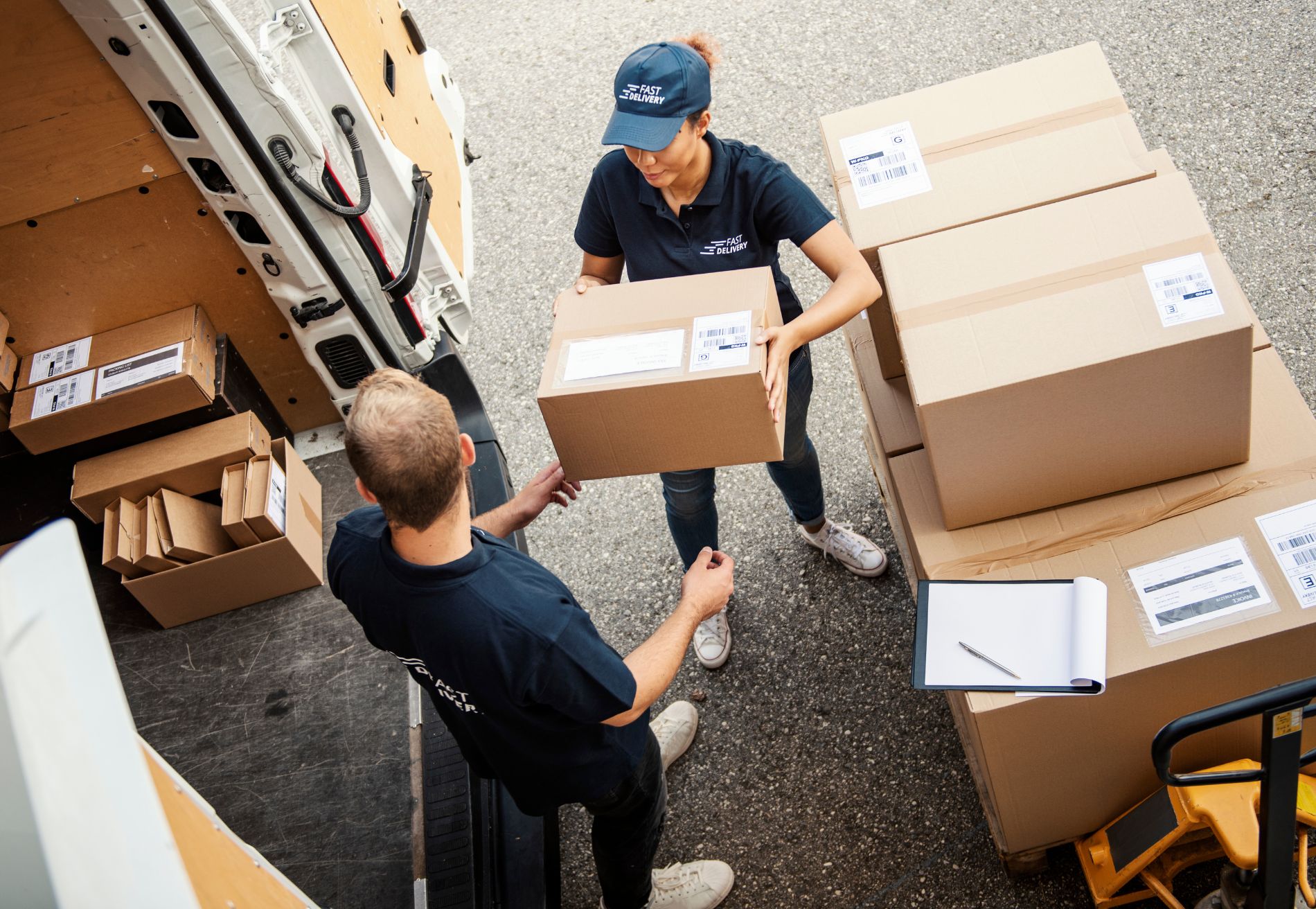How to Start a Pharmacy Delivery Service in the UK

In 2022, 19% of the UK population was aged 65 or older. That’s over 12 million people, and accounts for one in five of all UK residents. By 2072, one in four Brits will be over 65. The COVID-19 pandemic lockdowns also prompted the NHS to establish formal pharmacy delivery services across England. Now British customers want their prescriptions to arrive at their doorstep, just like groceries or takeaway.
That shift has opened the door for operators who understand local logistics and can meet healthcare standards. Yes, the regulations are strict — but that’s exactly what keeps low-effort competitors out. These strict regulations reduce your potential competitors. With the right delivery management software staying compliant can be simple. Here’s what it takes to launch — step by step.
The legal and regulatory landscape
To run a pharmacy delivery service in the UK, you’ll need to comply with transport, patient privacy, and safe handling regulations. It’s complex, and that’s exactly why companies like Uber and Just Eat avoid it. But it's nothing that the right systems and software can’t handle.
These are the major laws and organizations you need to know:
- The Medicines and Healthcare products Regulatory Agency (MHRA): This agency sets the rules for what medications can legally be delivered. It also oversees delivery conditions, such as which medicines must stay refrigerated throughout transport.
- The General Pharmaceutical Council (GPhC): This council establishes professional standards for conducting pharmacy deliveries. This includes photo ID checks and documented handovers.
- The UK General Data Protection Regulation (UK GDPR): This law governs the handling of patient data. You’ll need to keep customer information confidential throughout the delivery process, using proper data security, consent procedures, and secure storage systems. The Information Commissioner’s website contains excellent guidance for small businesses.
- Local NHS trusts and council regulations: Different regions may have additional restrictions. Birmingham might require different tracking protocols than Glasgow. What matters is knowing your patch and building compliant processes for each area you serve.
Take the time to consult with a healthcare compliance specialist early in your business development. The Royal Pharmaceutical Society provides guidance on professional standards. Legal advisers who specialize in healthcare can help determine if your plans for data security and patient privacy are compliant.
{"type": "ad-card", "title": "Start with Shipday and grow your business", "description": "Software like Shipday can help you stay compliant, right out of the box. Delivery notifications are automated through the app, which can also log customer signatures and proof of delivery images. Start free with Shipday today.", "primary-button": {"text": "Get started free", "link": "https://dispatch.shipday.com/signUp"}, "secondary-button": {"text": "Book a demo", "link": "https://www.shipday.com/sales"}}
Setting up your pharmacy delivery service step-by-step
So, you’ve looked into the regulations and consulted with a legal adviser to ensure your basic plan is sound. Now it's time for the brass tacks of establishing your pharmacy delivery service. Whether you're a pharmacy adding delivery or a courier getting into healthcare services, the setup is largely the same.
Step 1: Decide on your delivery model
How you deliver affects your baseline costs, profit margins, and how fast your business can grow. There are three major delivery models to consider: in-house delivery, partnered delivery, or a hybrid model.
- In-house delivery: You hire a team of delivery drivers, train them, pay them a wage, and insure (or in some cases provide) their delivery vehicles. In-house delivery gives you the most control of the process. You’ll build direct relationships with delivery staff and customers and own the business end-to-end. Your upfront investment will be higher, but on-going costs tend to be lower (and more controllable) than the other options.
- Partnered delivery: With partnered delivery, you route delivery orders through a third-party courier service. This can be as simple as sending shelf-stable medications through the Royal Mail or as complex as hailing third-party delivery drivers on demand for local, same-day delivery. Partnered delivery is popular with chemist shops that don’t want to hire a team of employee drivers. You typically pay a per-delivery fee, either a flat rate or a percentage of the total bill. The costs vary by platform and are typically negotiable, especially for large pharmacy brands.
- Hybrid model: A hybrid model combines in-house and partnered strategies. You’ll have a small team of employee delivery drivers and use third-party drivers when it makes sense (for long distances, simple deliveries, extended hours, or business surges). Hybrid models are great for growing delivery businesses.
Choose your delivery model based on what resources you have and how much control you want. In-house delivery gives you the most end-to-end control but comes with the highest upfront costs. Partnered delivery lets you pay as you go, but you can’t control how the drivers treat your customers.
If you go the partnered or hybrid route, take care to vet any third-party delivery partners. For prescription delivery, your options for third-party partners will be limited, as many large platforms do not meet compliance standards for delivering prescription medications. Deliveroo, for example, has a widely publicized partnership with Lloyd’s pharmacies, but their service exclusively handles over-the-counter products, not prescription medicines.
{"type": "ad-card", "title": "Start with Shipday today", "description": "Delivery management software organizes all your deliveries in a single dashboard, no matter what delivery model you use. Shipday offers a free baseline subscription so you can start your delivery operation today.", "primary-button": {"text": "Get started free", "link": "https://dispatch.shipday.com/signUp"}, "secondary-button": {"text": "Book a demo", "link": "https://www.shipday.com/sales"}}
Step 2: Register and insure your business
Once your delivery model is set, register your business and secure insurance. If you’re adding delivery services to an existing business, you’ll already have the registration covered, but you’ll still want to check your insurance policy.
- For business registration: All UK businesses must register with Companies House before you start trading. Online registration costs £50 and typically takes 1 to 3 days. You'll need a registered office address, director details, and a unique company name. All businesses must also register with His Majesty’s Revenue and Customs (HMRC) for tax purposes. If your annual receipts exceed £85,000, you'll also need VAT registration.
- For insurance coverage: In addition to public liability insurance (which covers your business in case of an accident with the public) and personal indemnity coverage (which covers human error in dispensing medications), you’ll also need to cover your vehicles. If you own the delivery vehicles, this would be a standard commercial auto policy. If your drivers use their own vehicles, you may still need a limited policy to cover any accidents that occur when using their vehicle for work. Your insurer may also recommend “goods in transit” insurance to cover the medicines during transport.
Even existing businesses should check with a trusted insurance broker to ensure all their gaps are covered. If you partner with a third-party service for any part of your delivery operation, ask for their proof of insurance coverage. Your broker can then guide you on any policy changes you need to bridge holes.
Step 3: Set operational policies
Before delivering your first medicines, you’ll need to decide on some key operational details like hours of operation and service areas. Don’t try to cover all of London on day one — most services start small and grow from there.
Some crucial details to iron out include:
- Delivery zones: Define which postcodes you'll serve and your delivery windows. Many successful pharmacy delivery services initially focus on a 5- to 10-mile radius, offering same-day delivery for orders placed before a specific cutoff time, such as 2 pm. You could also offer delivery windows (9 am to 12 pm, 12 pm to 3 pm, etc.) to give customers more flexibility.
- Delivery times: Will you deliver only during standard business hours, or will you offer evening and weekend service?
- Pricing: Will you charge a flat delivery fee, offer free delivery above a certain order value, or include delivery costs in your medication pricing? Most pharmacy delivery services in the UK charge between £3 to £7 per delivery, with free delivery for orders over £20 to £30. Will you offer subscription models for regular customers?
- Customer Communication: How will customers place orders? Via email, phone, an online ordering portal, your website, or an app? Some combination of these? All of them? How will you notify customers of confirmed orders and order status? Will you offer a customer support phone line or handle communications via a chatbot?
- Customer type: Will you accept delivery requests directly from consumers, or will you act as a third-party delivery service for multiple pharmacies?
Step 4: Define SOPs (Standard Operating Procedures)
You’ve got your external policies, now its time to establish internal processes. As you create processes, record them in writing as Standard Operating Procedures (SOPs). Think of SOPs as your quality control manual. They ensure every delivery meets the same high standards, no matter which team member handles it.
Here are the essential procedures you'll need to document:
- Prescription validation: Before any medication leaves your facility, you’ll need to verify the prescription is legitimate, check patient details match the delivery address, and confirm any special handling requirements. Your SOP should include a checklist that drivers or dispatch staff complete for each order.
- Secure packaging: Different medications require different packaging. Tablets and capsules need tamper-evident bags, liquids need spill-proof containers, and controlled substances require additional security measures. Create packaging standards that protect medications while making tampering obvious.
- Cold chain maintenance: Medications like insulin, vaccines, and certain antibiotics must stay within specific temperature ranges. Your SOP should cover temperature-controlled packaging, temperature monitoring devices, maximum transport times, and what to do if temperature limits are exceeded.
- Identity verification upon delivery: The person receiving prescription medications must be the patient or their authorized representative. Develop a verification process that includes checking photo ID, confirming delivery address, and documenting who received the medication. This protects both your business and your customers.
- Missed delivery protocols: Not every customer will be home when you arrive. Create clear procedures for attempted deliveries, including how many attempts you’ll make, where to store medications between attempts, and when to return items to the pharmacy. Many services offer secure drop-off locations or arrange specific delivery windows for second attempts.
You’ll need SOPs to begin your delivery business, but these should be living documents. Regularly audit your processes to ensure they fit the actual conditions your delivery drivers face in the field. Update SOPs as your needs or local regulations change.
Step 5: Set up delivery software
At this point, you probably feel like you’ve given yourself a lot of work to do. You’ll need to handle confidential health information, adhere to strict transportation regulations, and meet customer expectations for reliable service. The great news is that there are affordable delivery software tools to help you with all the heavy lifting.
Delivery management software can provide you with:
- Centralized order queues: Delivery management software consolidates order requests from various sources, like telephone, website, email, and mobile apps. Your dispatchers will have everything in one place, so they won’t have to switch between multiple order screens and risk missed deliveries.
- Driver dispatch and route optimization: Delivery management software includes digital, map-based route planning. Most will optimize your delivery routes for each driver based on assigned deliveries and real-time traffic conditions. Systems like Shipday can analyze a driver's past performance and suggest which deliveries to assign them.
- Real-time customer updates: Send automated notifications about delivery status, potential delays, or estimated arrival times, keeping customers informed without requiring constant telephone contact.This matters for customers waiting on time-sensitive medications.
- Delivery verification: Delivery software includes built-in tools for capturing and logging customer signatures and photo proof of delivery; two major parts of a compliant pharmacy delivery operation.
Specialized delivery platforms, such as Shipday, are designed to directly address all these requirements. On the first day of your operation, Shipday will consolidate your orders, automate route optimization, track drivers in real-time, send customer alerts, and capture proof of delivery all within a single, integrated system.
{"type": "ad-card", "title": "Planning to grow?", "description": "The tools you use early on need to keep up. Shipday works well for small volumes, but it’s also built for scale — with features like API integrations, custom workflows, and detailed reporting as your operation expands. You can get started for free and upgrade when you’re ready.", "primary-button": {"text": "Get started free", "link": "https://dispatch.shipday.com/signUp"}, "secondary-button": {"text": "Book a demo", "link": "https://www.shipday.com/sales"}}
FAQs
Q: Do I need a pharmaceutical license to run a pharmacy delivery service?
A: If you're only handling the delivery and not dispensing medications, you typically don't need a pharmaceutical license. However, you must comply with MHRA regulations for transportation and handling. If you're dispensing medications, you'll need full pharmacy registration with the GPhC.
Q: Can I deliver controlled substances?
A: Controlled substances have additional security requirements and may require special licensing. Consult with the MHRA and your legal adviser before including these in your service. Many delivery services start with non-controlled medications and add controlled substances later.
Q: How much should I charge for delivery?
A: Most UK pharmacy delivery services charge £3 to£7 per delivery, with free delivery for orders over £20 to £30. Consider your costs, local competition, and customer expectations when setting prices. Remember that healthcare customers often value reliability over low prices.
Q: Do I need special vehicles for pharmacy deliveries?
A: Standard vehicles work for most medications, but you'll need temperature-controlled storage for refrigerated medications. Many services use insulated bags or portable coolers rather than specialized vehicles. The key is maintaining proper temperature ranges and having monitoring systems in place.
Putting it all together
Pharmacy delivery in the UK depends on trust, compliance, and consistent execution. From temperature-sensitive medications to secure handovers, every aspect of the process must meet strict standards and run smoothly. Whether you’re delivering statins in Surrey or insulin in Salford, your service must adhere to strict rules while remaining flexible to handle real-world demands.
That’s where tools like Shipday come in. It gives you one place to manage orders, dispatch drivers, notify customers, and record delivery proof — all in line with UK pharmacy delivery standards. Start free and see how much smoother your operation can run with the right software behind it.
Index
Ready to get started?
Play around with it first, add your team, pay later.








.avif)






%201.svg)
